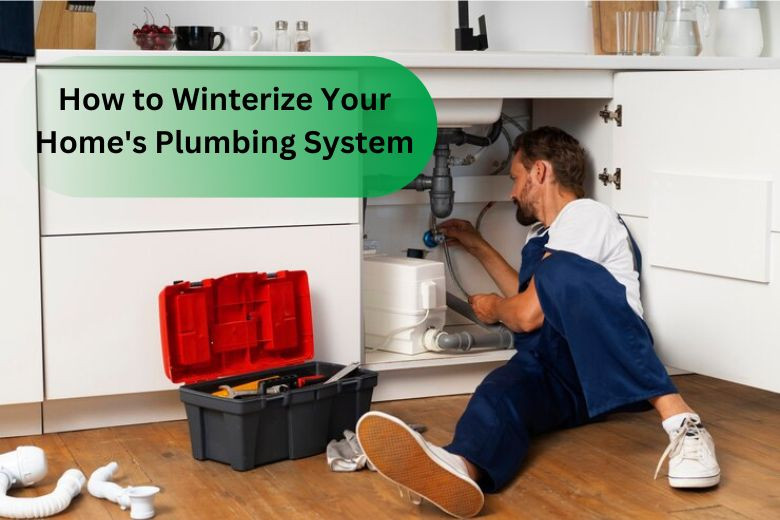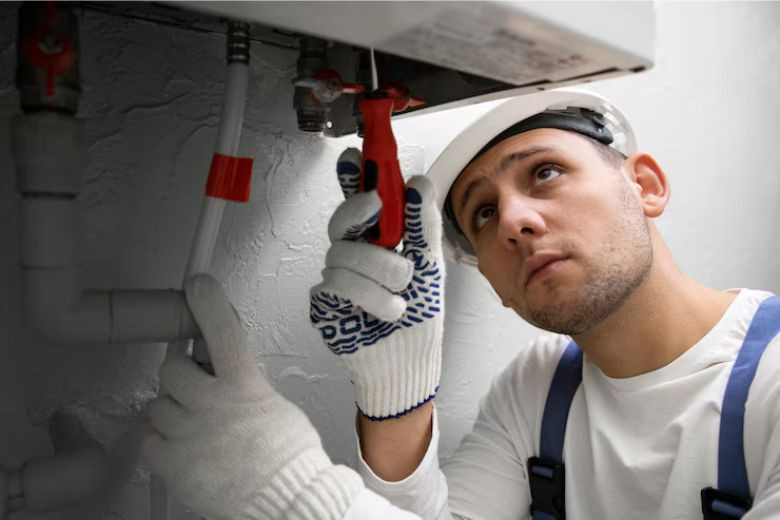How to Winterize Your Home's Plumbing System
Posted on September 02, 2024 by Admin

Any house system requires special care in the winter; otherwise, it may be damaged under the influence of low temperatures. Winterizing your home's plumbing system saves you money and time from probable repairs and inconveniences during the cold season. Here is a comprehensive guide on how to winterize your home's plumbing system and have everything work smoothly throughout the cold season.
1. Insulate Pipes
Insulate your pipes to effectively winterize your home's plumbing system. This keeps the pipes warm and prevents them from freezing. Focus particularly on pipes in unheated areas, like crawl spaces, basements, and attics. These sleeves or wraps of pipe insulation are available at most hardware stores, fairly inexpensive, and pretty easy to install. This can lower the risk of your pipes freezing and possibly bursting significantly.
2. Seal gaps and cracks
Add some more winterizing to your plumbing by sealing any gaps and holes on the exterior side of your home and on your pipes. Gaps allow cold air to seep in and give those pipes an opportunity to freeze up on you. Use caulk or weatherstripping to seal any openings you find. Be extra careful around windows, at doors, and where pipes come into the home.
3. Drip Faucets
Allow your faucets to drip when it's the coldest in temperature to keep those pipes from freezing. This goes for all exterior wall or unheated area faucets. A slight flow of water keeps it moving through the pipes and doesn't let the water freeze and block the passage. It is a really simple yet very effective measure for winterizing a home's plumbing system.

4. Disconnect Hoses and Drain Outdoor Faucets
Sometimes you will be advised to shut off the outdoor hose faucet during winter. Water may have been trapped in the hoses and it will freeze. The ice will expand, bursting the hose and even the faucet. After shutting off the hose, it should also be drained and stored thereafter. Other precautions in protecting outdoor faucets involve turning off their water supplies and then draining them. This is to ensure that the water left behind does not freeze and consequently destroy the faucets.
5. Keep the Heat On
Keeping the temperature of your indoor consistent is one of the best ways to winterize the plumbing system of your home. Even when you are away from your house during winter, you have to set your thermostat at 55°F or above so that the water lines don't freeze when the temperature suddenly drops.
6. Flush and Winterize Sprinkler System
If you have an irrigation or sprinkler system, make sure to winterize it before the first freeze. This entails turning off the water supply to the system and then draining the rest of the water from the system. You may be required to blow the water out of the lines with an air compressor so that it doesn't freeze up and rupture the lines.
7. Pipe Heating Cable Installation
For added insurance, especially if you live in a really cold climate, you might want to invest in pipe heating cables that can hug those more susceptible pipes with a bit of extra warmth. Often, these are thermostatically controlled so that they come on only when the temperature drops below a certain point on the temperature scale. Particularly successful, pipe heating cables can be installed for pipes that pass through unheated areas or pipes that have frozen previously.
8. Monitor and Maintain Your Plumbing System
A well-winterized plumbing system is one that is properly maintained and regularly monitored for problems. Keep checking for leaks, inspect insulation, and ensure the heating system is performing as it should. Early enough preparation on recognizing the problems will help protect against serious damage.
Conclusion
Keep your pipes from cold-weather damage and winterize your home's plumbing. This shall effectively guard your plumbing if you can do such things as insulate pipes, seal leaks, drip faucets, disconnect hoses, keep the indoor heat up, and take care of outdoor systems. Regular checkups with maintenance will also help in keeping the plumbing system in order during the winter season. By following these tips to winterize your home's plumbing system, you can look forward to a hassle-free winter season.
Also Read :
How to Address Plumbing Issues in Older Homes
The Benefits of Installing a Recirculating Pump for Hot Water
How to Install and Maintain a Home Water Filtration System
Faqs
-
1. Why is it important to winterize a home's plumbing system?
It is important that we winterize your house plumbing system to ensure that its pipes do not freeze and burst when temperatures are at their coldest. If you have frozen pipes, this can lead to a lot of water losses, which means a lot of water damage, expensive repairs, and water service disruptions for some time. Proper winterization adverts such problems and ensures that your plumbing system remains perfectly functional throughout the winter.
-
2. How does pipe insulation help in winterizing?
Insulating the pipes kept them warm enough and provided a reduced possibility of freezing. Sleeves or wraps of insulation for piping installations are easy to handle and protect pipes in places such as crawl space or attics, which are not heated. This additional insulation will, too, prevent the fluid poured inside it from freezing by keeping the temperature even.
-
3. What do you do to outdoor faucets before winter?
Before winter starts, remove garden hoses from outdoor faucets and drain them. Shut off the water supply to the faucets and drain out any remaining water. This way, no water left inside the hoses and faucets is going to freeze to cause breakage and leaks.
-
4. How does a pipe heating cable benefit winterization?
A heating cable on a pipe will provide supplemental heat to vulnerable pipes, helping them not to freeze when the weather turns extremely cold. First and foremost, notable mention goes to those in pipes installed in unheated spaces; these can be preset to turn on by themselves at temperatures that fall to preset levels below freezing.
Recent Post
- Top Plumbing Service Providers in Arizona, USA
- Top 10 Electrician Service Providers in Alabama, USA
- Top 20 Roof Repair Service Providers in Alabama, USA
- The Role of Roof Insulation in Energy Efficiency: Tips and Tricks
- Understanding Roof Damage from Wildlife and How to Prevent It
- How to Choose the Best Roofing Contractor for Emergency Repairs
- Roofing Maintenance for Historic Homes: Preserving Architectural Integrity
- The Importance of Proper Attic Ventilation for Roof Health
- How to Identify and Prevent Roof Mold and Mildew
- The Best Practices for Removing Snow from Your Roof